The 22nd Japan Media Arts Festival Exhibition of Award-winning Works was held from Saturday, June 1 to Sunday, June 16 in and around Miraikan (the National Museum of Emerging Science and Innovation) and at Fuji Television Wangan Studio. Prior to the exhibition’s official opening, a press preview took place on Friday, May 31, with a number of the award-winning artists attending. This article reports on the portion of the exhibition held at Miraikan based on the comments of the award-winning artists.
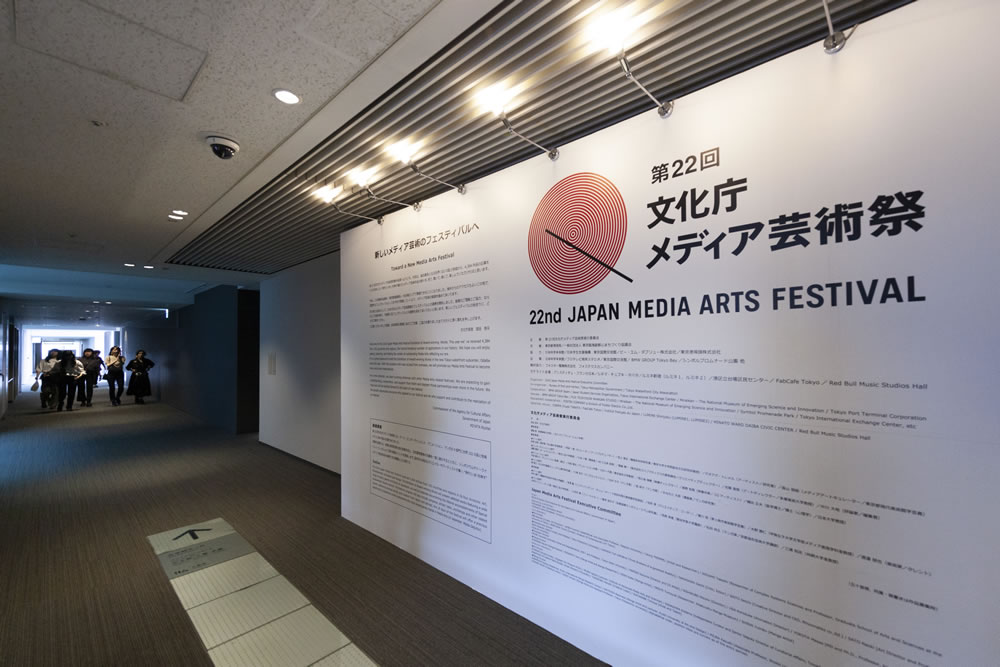 At Miraikan, an exhibition was held comprising four works from the Art Division, three from the Entertainment Division (three other works were exhibited at the Fuji Television Wangan Studio), seven from the Animation Division, three from the Manga Division, and the Special Achievement Award winning entry, accompanied by a cooperative festival exhibition.
At Miraikan, an exhibition was held comprising four works from the Art Division, three from the Entertainment Division (three other works were exhibited at the Fuji Television Wangan Studio), seven from the Animation Division, three from the Manga Division, and the Special Achievement Award winning entry, accompanied by a cooperative festival exhibition.
Photo: Shu Nakagawa
The Japan Media Arts Festival, which has continued from 1997, is a comprehensive festival of Media Arts organized annually by The Agency of Cultural Affairs, Government of Japan. The festival invites submissions from around the world in each of four divisions: Art, Entertainment, Animation and Manga. The 22nd Festival received a total of 4,384 entries from 102 countries and regions around the world.
During the exhibition period, award-winning works including the winners of the Grand Prizes, Excellence Awards, and New Face Awards were exhibited and a variety of collaborative events were held in several locations. The works were exhibited at two venues; namely on the 7th floor of Miraikan and at Fuji Television Wangan Studio. As these two venues are located on either side of Symbol Promenade Park, visitors were able to move from one venue to the other easily.
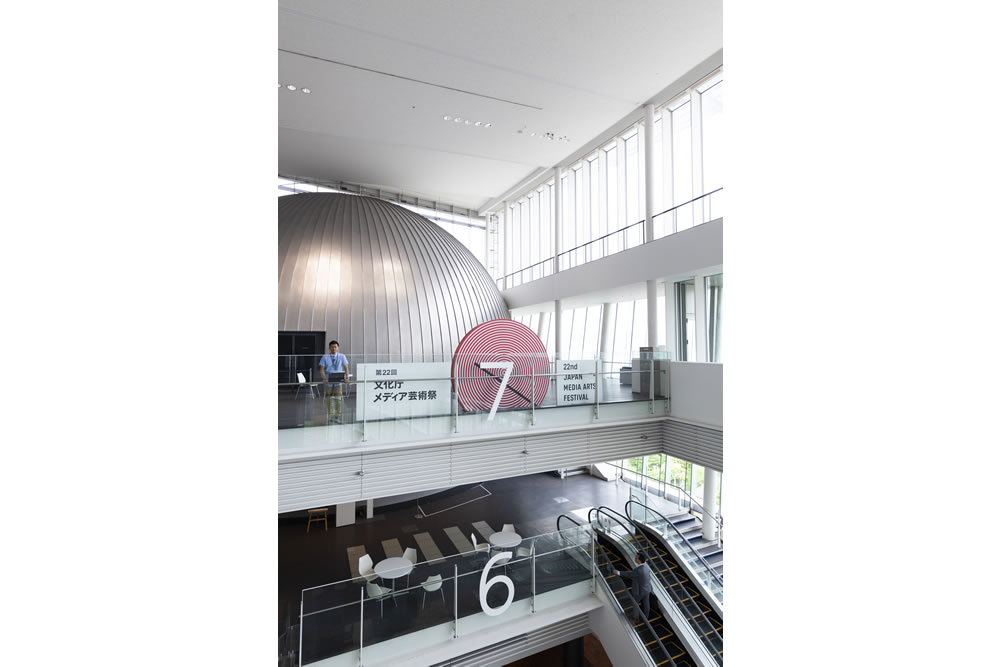 The entrance to the exhibition at Miraikan. The red round mark is a landmark
The entrance to the exhibition at Miraikan. The red round mark is a landmark
Photo: Shu Nakagawa
Chico won the Grand Prize in the Entertainment Division
At Miraikan, the exhibition site was divided into several areas. When visitors ascended the escalator to the exhibition site, the first thing that caught their eyes was a panel showing Chico, the mascot character from the TV program Chico Will Scold You!, the winner of the Grand Prize in the Entertainment Division. In the program, a virtual five-year-old knowit- all named Chico innocently poses questions that seem simple enough to the guests. The program was highly evaluated on account of its structure, running from a puzzled first response “Huh?” to a final satisfied “Aha!” as the answers are explained, and also for the excellent computer graphic techniques employed by its production team. In the Entertainment Division, two Excellent Award winning entries were also on display. The first award winner was LINNÉ LENS, created by the LINNÉ LENS Production Team (Kenichi Sugimoto, Representative). LINNÉ LENS is a handy encyclopedia app that instantly displays a name accompanied by a detailed commentary when a smartphone is held up to a living animal. The app holds a directory of about 10,000 animal names. Sugiyama said he hoped “people will utilize this app when child asks them the name of an animal.” The other award winner was TikTok created by the TikTok Japan team. TikTok is a social media video platform that allows users to shoot, edit, and share 15-second videos with matching background music and sound. At the exhibition site, videos created using this platform were screened. These three award-winning works were also exhibited at Fuji Television Wangan Studio.
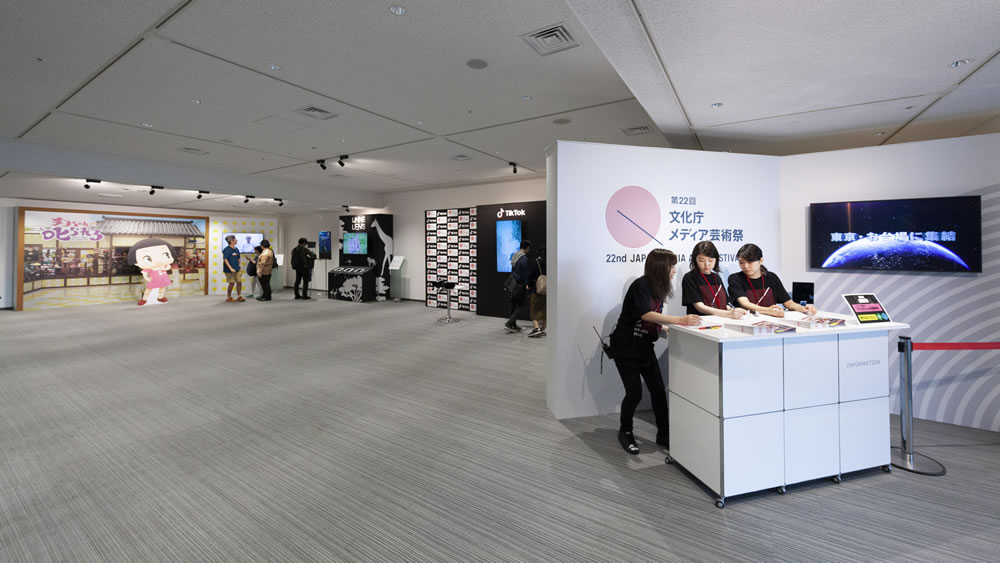 Works in the Entertainment Division catch visitors’ eyes as soon as they enter the exhibition venue
Works in the Entertainment Division catch visitors’ eyes as soon as they enter the exhibition venue
Photo: Shu Nakagawa
The Animation Division, featured films portray prominent female characters and short films expressing various hardships
In an adjoining room, the original drawings, storyboards and setting drawings of the works that won the Excellence and New Face Awards in the Animation Division were exhibited. In addition, some of the award-winning short animations and excerpts from the long animations were freely viewable on tablet devices as well as shown on projection screens.
 Visitors were able to view videos freely using tablet devices placed on the center table.
Visitors were able to view videos freely using tablet devices placed on the center table.
Photo: Shu Nakagawa
One of the Excellence Award winners entitled The Girl Without Hands by Sebastien Laudenbach, a French animated feature film that had previously been screened publicly in Japan, was created entirely by the artist on his own, including the characters and background animation. Laudenbach said that he improvised the entire thing without a script or a storyboard and revealed that he followed a completely different procedure from the usual animation production process.
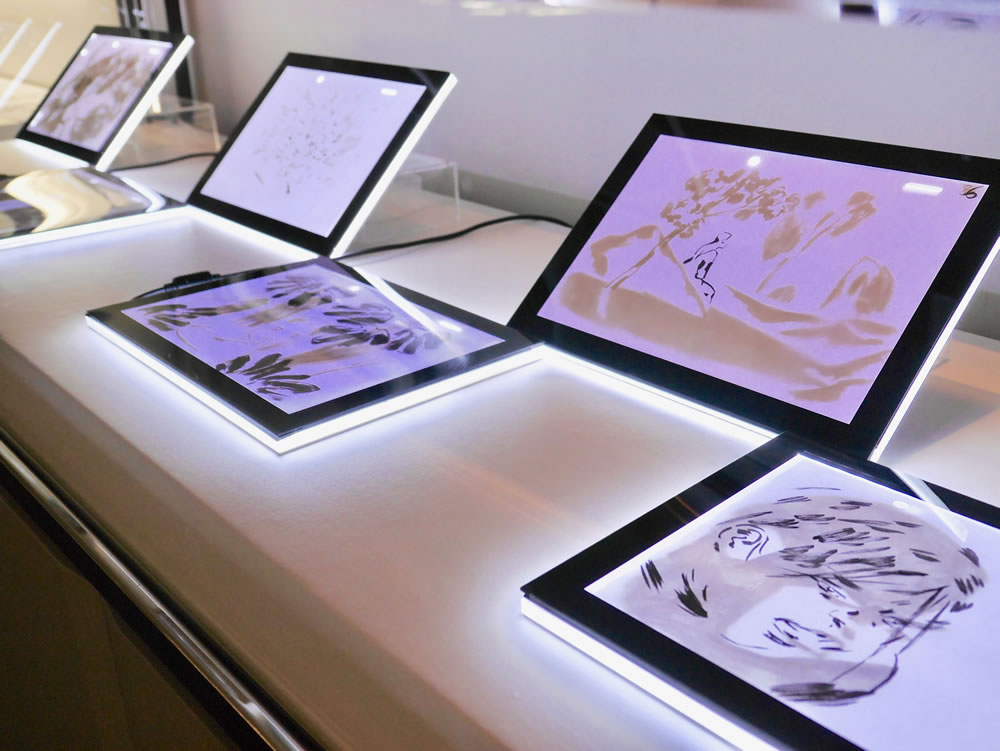 Sebastien Laudenbach’s The Girl Without Hands
Sebastien Laudenbach’s The Girl Without Hands
In addition to the film itself, original hand drawings were also viewable on tablet devices.
© Les Films Sauvage
The other winners of Excellence Awards were Shinji Higuchi’s animation television series Dragon Pilot: Hisone & Masotan, about the adventures of a rookie officer in the Japan Air Self-Defense Force and a dragon that transforms itself into a military plane; Hiroyasu Ishida’s Penguin Highway, an animation film adapted from the novel of the same title; and Kitaro Kosaka’s Okko’s Inn, an animation film based on the popular Japanese series of children’s novels Waka Okami wa Shogakusei! (The Young Innkeeper is a Grade Schooler!) by Hiroko Reijo.
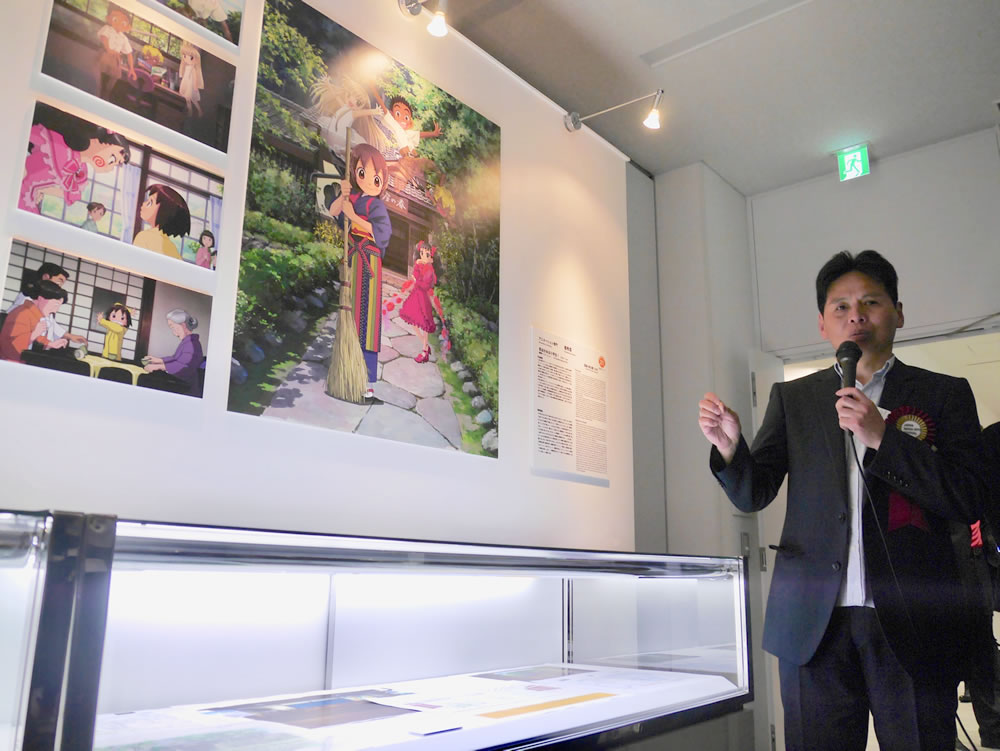 Kitaro Kosaka’s Okko’s Inn
Kitaro Kosaka’s Okko’s Inn
Kosaka recalled when he was offered the chance to make an anime adaptation, saying “I felt it was interesting to understand the feelings of the guests, which is the opposite of the psychology of wanting others to understand her [Okko’s] feelings.”
© Hiroko Reijo, Asami, KODANSHA / WAKAOKAMI Project
The New Face Awards went to the creators of three short animations: Akihiko Yamashita for Invisible, a hand-drawn film telling the story of a man who wakes up one morning to find that he has become invisible; Amir Houshang Moein for Am I a Wolf?, created based on the poetry of a contemporary Iranian children’s book writer; and Anastasia Makhlina for The Little Ship, which depicts the interaction between a young girl and her friend, an elephant.
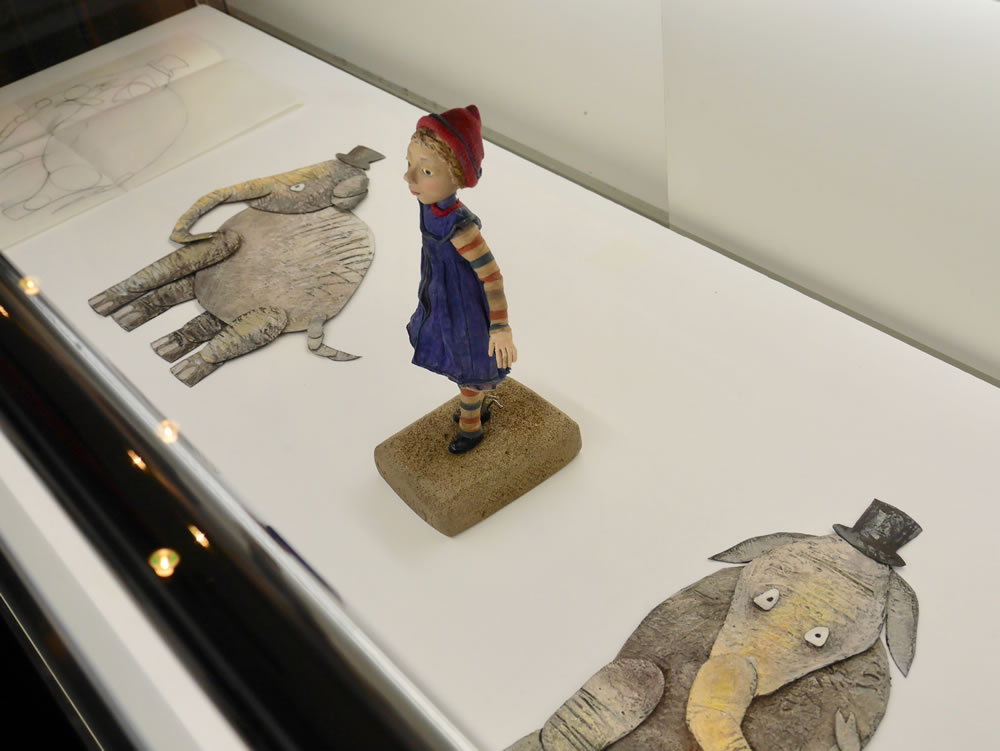 Anastasia Makhlina, The Little Ship
Anastasia Makhlina, The Little Ship
Makhlina created this work, her first stop motion animation, as her graduation piece at university. At the exhibition, cutout puppets of the girl and the elephant that were used for the film were on display.
Installations using light, sound and organic substances were lined up in the Art Division
The media installation work Lasermice by So Kanno, who won an Excellence Award in the Art Division, was exhibited in a room located beyond the Entertainment and Animation Division rooms. Inspired by the synchronized movement seen in swarming creatures such as fireflies, this work comprises 60 small self-propelled robots that generate rhythms while communicating with light.
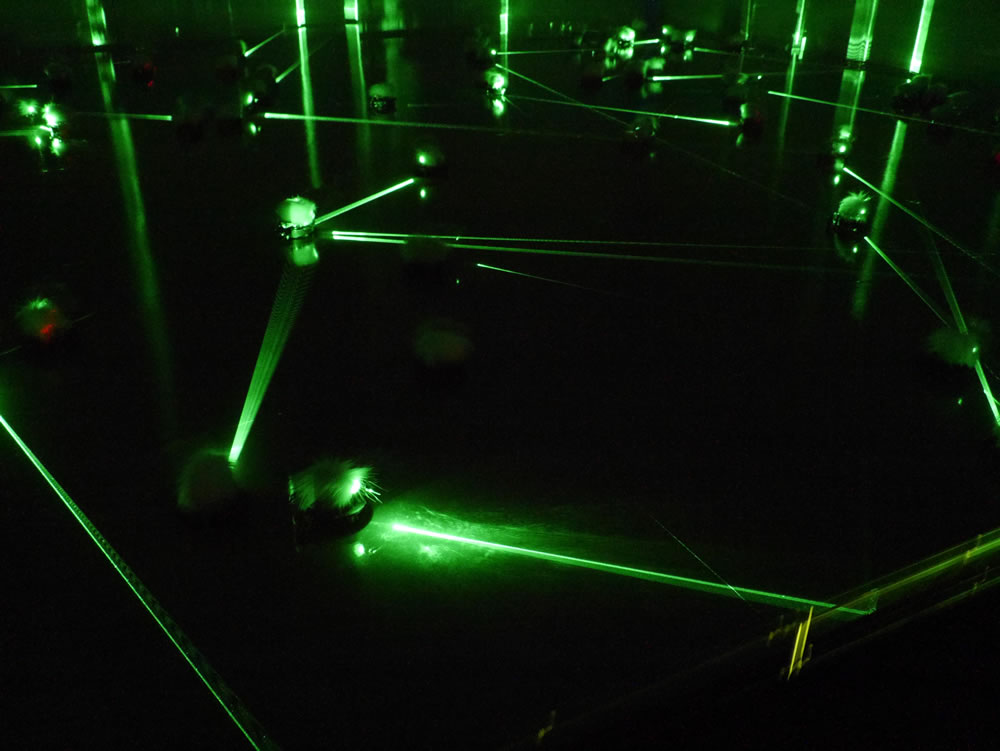 Lasermice by So Kanno
Lasermice by So Kanno
The unpredictable rhythms generated by small robots can be experienced both visually and auditorily.
© 2018 So Kanno
Moreover, a room nearby housed a Grand Prize winning work entitled Pulses/Grains/Phase/Moiré, a sound installation by Ken Furudate. Originally exhibited on the Seikan Ferry Memorial Ship Hakkoda-maru, this work employed more than 300 speakers and LED lights. This large-scale sound installation was recreated in a room in Miraikan. In the dark space, an array of countless wall-mounted LED lights flashed in time with the clicking sounds emitted through the speakers.
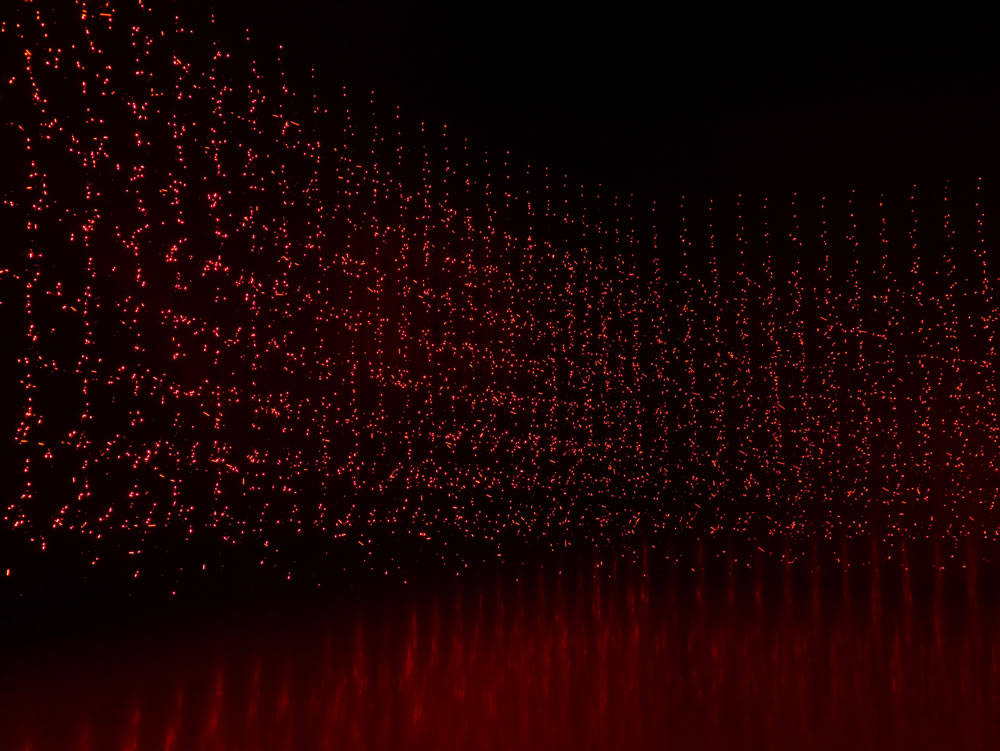 Pulses/Grains/Phase/Moiré by Ken Furudate
Pulses/Grains/Phase/Moiré by Ken Furudate
The pitch-dark space was filled with monotonous sounds and flashing LED lights.
In a room a short distance from the rest of the exhibition site, two works were exhibited. One was a media installation and bio artwork named Culturing <Paper>cut, created by Hideo Iwasaki, for which he won the Excellence Award in the Art Division. This was a work using bacteria based on the artist’s own research paper on cyanobacteria. At the site, viewers were able to examine the unique patterns slowly created by the bacteria. The other work, named watage, created by (euglena), won the New Face Award. This interactive installation consisted of a simple mechanism that caused dandelion fluff (watage in Japanese) to sway in response to the tiny air currents caused by the viewers’ movements.
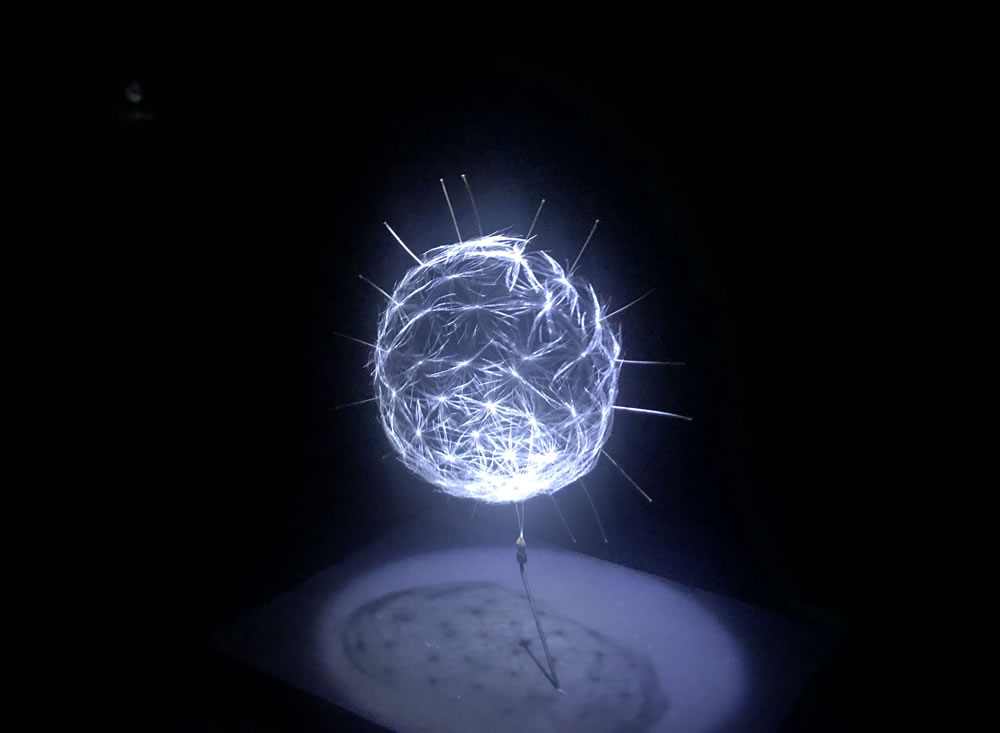 watage by (euglena)
watage by (euglena)
The artist (euglena) commented that, “the work may move the audience because it doesn’t use mechanical sensors.”
The New Face Awards in the Manga Division went to works that possessed their own unique themes
In an adjoining room there were booths presenting three works whose creators won New Face Awards in the Manga Division. The first was KIIROI EMBAN (Yellow Disk), a collection of “fantastic horror” short stories in a unique style by Tenshin Kijima. The second was Invisible Differences by Mademoiselle Caroline, a bande dessinne comic based on the biography of a woman diagnosed with Asperger syndrome. The original book was written by Julie Dachez and translated into Japanese by Masato Hara. And the third was metamorphose no engawa by Kaori Tsurutani, which depicts communication between a 75-year-old woman and a 17-year-old high school student. All three works portray different worlds. At the exhibition site, original sketches and illustration panels related to these works were on display. In addition, hardcover editions of the award-winning works were made available at the site so the visitors were able to pick up and read these volumes.
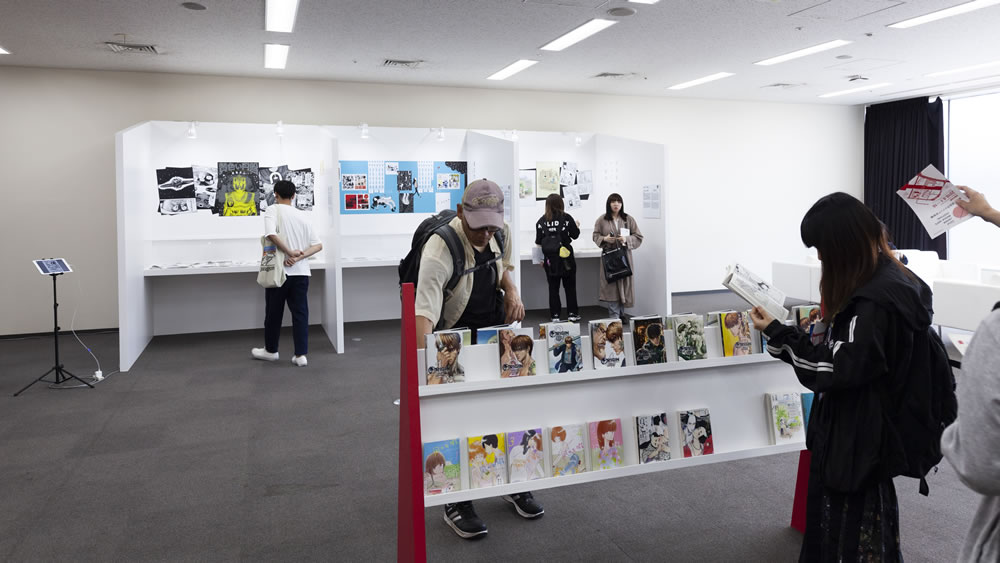 At the exhibition site, in addition to book versions of the New Face Award-winning manga works, other award-winning works were available such as ORIGIN, the winner of the Grand Prize in the Manga Division
At the exhibition site, in addition to book versions of the New Face Award-winning manga works, other award-winning works were available such as ORIGIN, the winner of the Grand Prize in the Manga Division
Photo: Shu Nakagawa
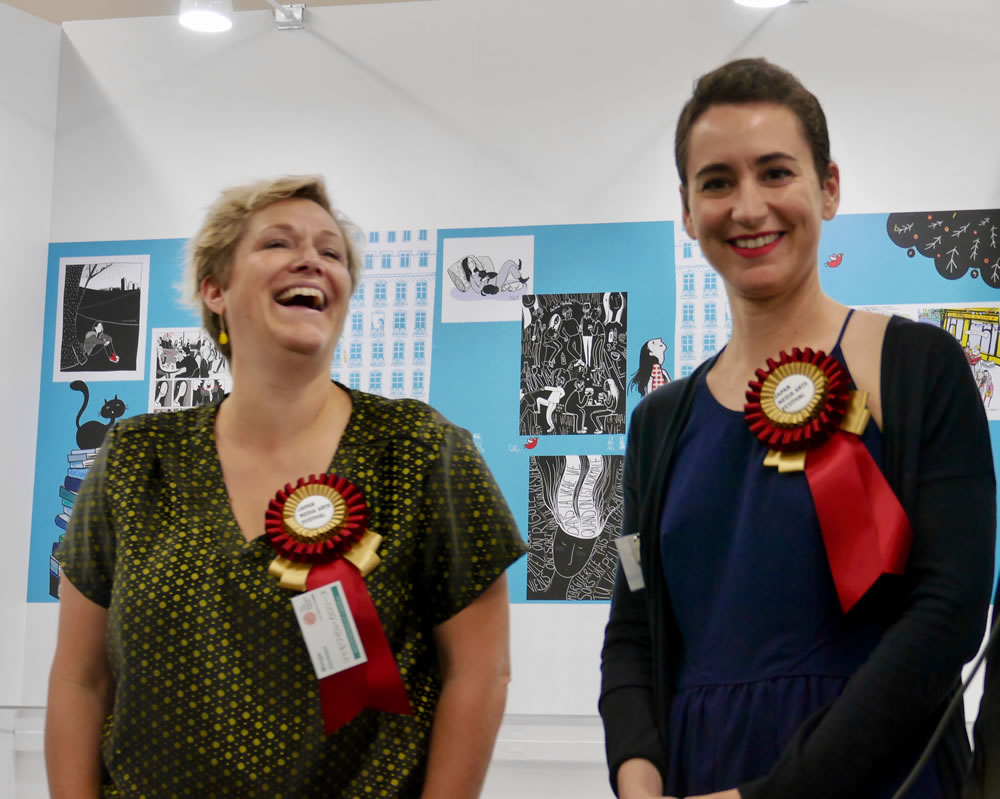 Invisible Differences manga author Mademoiselle Caroline/original author: Julie Dachez/translator: Masato Hara
Invisible Differences manga author Mademoiselle Caroline/original author: Julie Dachez/translator: Masato Hara
Caroline (left) and Dachez. Dachez said, “I hope this manga will help people in Japan to understand Asperger syndrome more.”
© Éditions Delcourt / HARA Masato
Special Achievement Awards went to four people who contributed to developing their specific fields
An exhibition of Special Achievement Award entries and related events was located in a room opposite the main exhibition site. This award is presented to individuals who have made significant contributions to the Japanese media arts world. This year, Special Achievement Awards were presented to the following four individuals: director and animation researcher Hiroshi Ikeda, critic Tomofusa Kure, creative director Kazuko Koike, and Professor Emeritus of the University of Tsukuba Shunsuke Mitamura.
Ikeda was praised for his contribution to education and research related to animation at universities including Nihon University College of Art, after screenwriting and directing the animated TV series Hustle Punch and the theatrical full-length animated film The Flying Ghost Ship. Kure began his career as a manga critic at a young age. In 2001, he was involved in founding the Japan Society for Studies in Cartoons and Comics. He has greatly contributed to the development of manga studies. The reason Koike was given this award was because of her achievement in opening up many paradigms within the creative and design field, including in areas such as advertising, branding, fashion and manufacturing. Mitamura is Japan’s leading holography artist and is active both in Japan and abroad. He has mentored a long list of creators. Also, a collection of documentary materials and interview videos that introduce the activities of the four winners were showcased at the exhibition site.
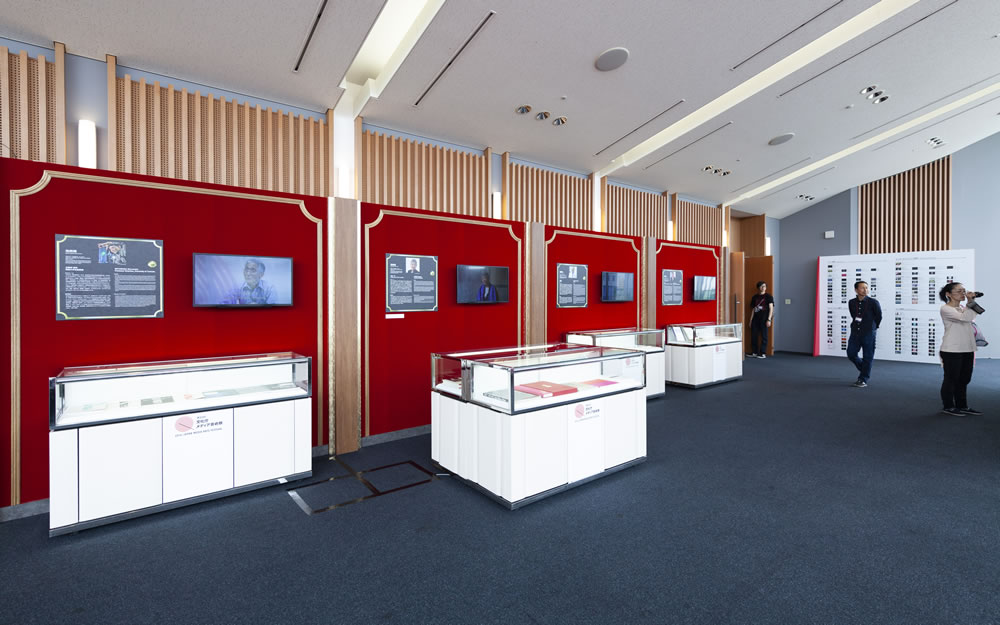 The exhibition of the Special Achievement Award. Through the display of publications, the viewers can trace the activities and achievements of the award winners.
The exhibition of the Special Achievement Award. Through the display of publications, the viewers can trace the activities and achievements of the award winners.
Photo: Shu Nakagawa
(information)
22nd Japan Media Arts Festival Exhibition of Award-winning Works
Period: Saturday, June 1-Sunday, June 16, 2019 (Closed Tuesday, June 4 and 11)
Opening Time: 10:00 a.m.-5:00 p.m.
Venues: Miraikan-The National Museum of Emerging Science and Innovation, Fuji Television Wangan Studio, Tokyo International Exchange Center, BMW Group Tokyo Bay, Symbol Promenade Park and other locations
Admission: Free
Organizer: 22nd Japan Media Arts Festival Executive Committee
https://j-mediaarts.jp/en/
*URL link confirmed on May 23, 2020.
| Part 2▶ |











